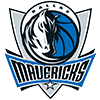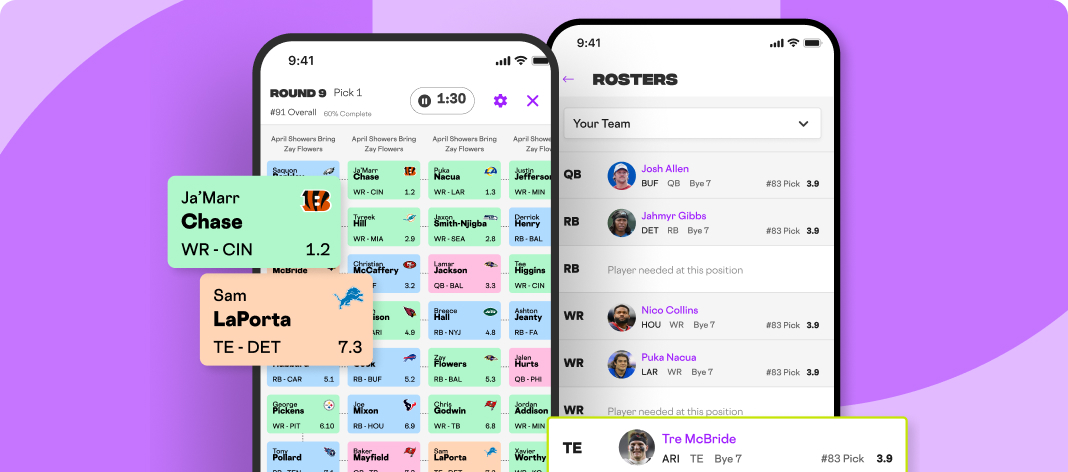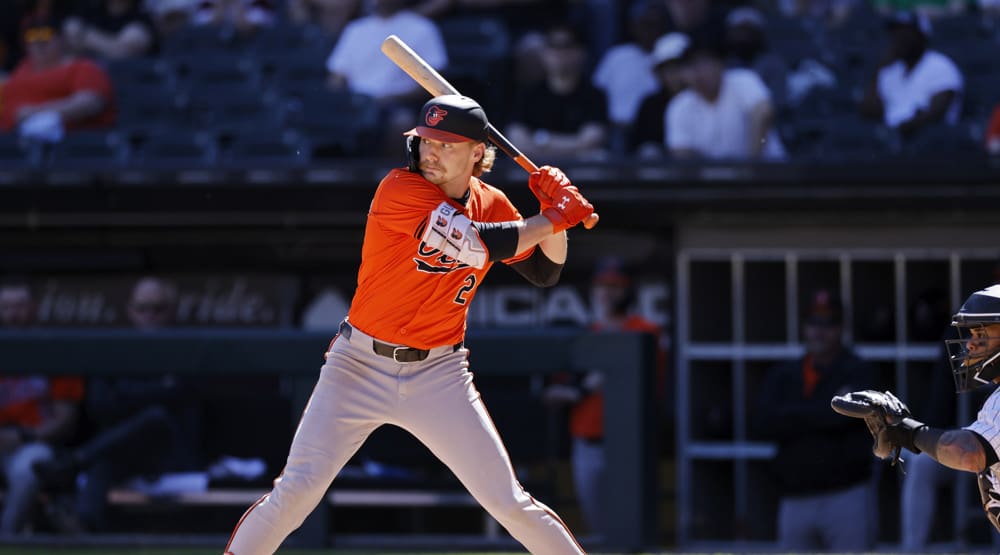There's a folder named Z Files I store in the cloud. In it, I archive past installments and the associated research. In addition, there's a sub-folder called ON DECK where I store future column topics and outlines, often with links to potential background information. Then there's another one labeled Yeah Right. This is where I keep ideas I'd like to pursue. It's usually just a bullet point since I know I'll never get around to it.
Unless of course, there's a pandemic, delaying the start of the 2020 MLB season.
The top line says, "Download all the NFBC Main Event drafts and crowdsource some research ideas."
It took a couple days, but I copied and pasted 570 Opening Day rosters from last season's Main Event into Excel.
Uh oh, the NFBC has a rule where you don't need to draft a legal lineup with the first 23 picks; you just need to be kosher after 30 picks.
It took three days, but I copied and pasted 570 opening day rosters from last season's Main Event into Excel, with tweaks to list the active lineup in the first 23 cells, then the reserves.
Obviously, I had some ideas for several studies. But you don't survive almost 25 years in this business without a few tricks, so I posted the following on Twitter:
So hypothetically, if you're planning on playing the @TheNFBC Main Event and someone downloaded every drafted roster from last season's contest, what research would you want done? Asking
There's a folder named Z Files I store in the cloud. In it, I archive past installments and the associated research. In addition, there's a sub-folder called ON DECK where I store future column topics and outlines, often with links to potential background information. Then there's another one labeled Yeah Right. This is where I keep ideas I'd like to pursue. It's usually just a bullet point since I know I'll never get around to it.
Unless of course, there's a pandemic, delaying the start of the 2020 MLB season.
The top line says, "Download all the NFBC Main Event drafts and crowdsource some research ideas."
It took a couple days, but I copied and pasted 570 Opening Day rosters from last season's Main Event into Excel.
Uh oh, the NFBC has a rule where you don't need to draft a legal lineup with the first 23 picks; you just need to be kosher after 30 picks.
It took three days, but I copied and pasted 570 opening day rosters from last season's Main Event into Excel, with tweaks to list the active lineup in the first 23 cells, then the reserves.
Obviously, I had some ideas for several studies. But you don't survive almost 25 years in this business without a few tricks, so I posted the following on Twitter:
So hypothetically, if you're planning on playing the @TheNFBC Main Event and someone downloaded every drafted roster from last season's contest, what research would you want done? Asking for a friend with Excel skillz and a fantasy baseball web site.
— Todd Zola (@ToddZola) April 30, 2020
Suffice it to say, the tweeps came through big time, spawning several excellent topics.
Before I spend the next several Z Files columns presenting the findings, it should be noted that most of the information transcends the National Fantasy Baseball Championship. Yes, the competition is its own entity with unique rules and approaches, but many of the principles are applicable to different formats, including your home leagues. In addition, some of the results are a function of the 2019 player pool and may not carry over, especially since the 2020 landscape will offer pandemic-induced nuances. But again, don't let that blind you to some of the winning tendencies.
Drafted Stats versus Final Stats
In the interests of full disclosure, this was the primary impetus for the project. It's something I've investigated several times, but never with this volume of leagues fleshing out variance. Previous research divulged between 65 and 90 percent of final stats are acquired on draft day, with shallow leagues tending towards the low end and deep leagues nestling near the high end.
The methodology is simple. Team totals were derived assuming the Opening Day roster was active all season and compared to actual season-ending totals. It's important to note actual stats and not projections are used, so the effect of over-performers is already baked in. That is, if a team's ERA improved over the course of the campaign, it's not because they drafted Hyun-Jin Ryu, or someone else of his ilk. Ryu's final numbers are counted in the drafted totals.
Here's the drafted team totals and category rankings by place in the standings:
| Team | BA | HR | R | RBI | SB | W | SV | K | ERA | WHIP |
|---|---|---|---|---|---|---|---|---|---|---|
1 | 0.2680 | 318 | 1001 | 983 | 100 | 72 | 42 | 1222 | 3.867 | 1.197 |
2 | 0.2653 | 298 | 954 | 920 | 95 | 71 | 43 | 1175 | 3.801 | 1.193 |
3 | 0.2673 | 308 | 972 | 943 | 101 | 71 | 42 | 1144 | 3.969 | 1.225 |
4 | 0.2647 | 290 | 926 | 902 | 99 | 74 | 46 | 1182 | 3.870 | 1.207 |
5 | 0.2670 | 294 | 923 | 901 | 97 | 66 | 46 | 1121 | 3.849 | 1.205 |
6 | 0.2659 | 293 | 940 | 918 | 93 | 65 | 41 | 1101 | 4.042 | 1.234 |
7 | 0.2634 | 276 | 883 | 862 | 89 | 66 | 44 | 1109 | 3.968 | 1.226 |
8 | 0.2638 | 278 | 903 | 862 | 93 | 66 | 43 | 1082 | 4.006 | 1.237 |
9 | 0.2649 | 270 | 889 | 856 | 88 | 66 | 41 | 1083 | 4.091 | 1.253 |
10 | 0.2611 | 277 | 886 | 866 | 94 | 65 | 48 | 1106 | 4.010 | 1.226 |
11 | 0.2633 | 270 | 878 | 855 | 91 | 61 | 47 | 1037 | 4.086 | 1.248 |
12 | 0.2639 | 265 | 864 | 842 | 89 | 64 | 41 | 1073 | 4.180 | 1.263 |
13 | 0.2586 | 261 | 834 | 816 | 79 | 58 | 39 | 1034 | 4.247 | 1.274 |
14 | 0.2607 | 265 | 873 | 835 | 94 | 57 | 36 | 997 | 4.249 | 1.281 |
15 | 0.2583 | 252 | 808 | 786 | 82 | 58 | 39 | 969 | 4.255 | 1.291 |
| Team | BA | HR | R | RBI | SB | W | SV | K | ERA | WHIP | Points |
|---|---|---|---|---|---|---|---|---|---|---|---|
1 | 15 | 15 | 15 | 15 | 14 | 14 | 7 | 15 | 13 | 14 | 137 |
2 | 11 | 13 | 13 | 13 | 11 | 13 | 10 | 13 | 15 | 15 | 127 |
3 | 14 | 14 | 14 | 14 | 15 | 12 | 8 | 12 | 10 | 11 | 124 |
4 | 9 | 10 | 11 | 11 | 13 | 15 | 12 | 14 | 12 | 12 | 119 |
5 | 13 | 12 | 10 | 10 | 12 | 9 | 13 | 11 | 14 | 13 | 117 |
6 | 12 | 11 | 12 | 12 | 8 | 7 | 5 | 8 | 7 | 8 | 90 |
7 | 6 | 7 | 6 | 7 | 4 | 8 | 11 | 10 | 11 | 9 | 79 |
8 | 7 | 9 | 9 | 8 | 7 | 11 | 9 | 6 | 9 | 7 | 82 |
9 | 10 | 5 | 8 | 6 | 3 | 10 | 4 | 7 | 5 | 5 | 63 |
10 | 4 | 8 | 7 | 9 | 10 | 6 | 15 | 9 | 8 | 10 | 86 |
11 | 5 | 6 | 5 | 5 | 6 | 4 | 14 | 4 | 6 | 6 | 61 |
12 | 8 | 3 | 3 | 4 | 5 | 5 | 6 | 5 | 4 | 4 | 47 |
13 | 2 | 2 | 2 | 2 | 1 | 2 | 2 | 3 | 3 | 3 | 22 |
14 | 3 | 4 | 4 | 3 | 9 | 1 | 1 | 2 | 2 | 2 | 31 |
15 | 1 | 1 | 1 | 1 | 2 | 3 | 3 | 1 | 1 | 1 | 15 |
Keeping in mind this is the average of 38 leagues, despite the eventual league winner crushing the draft, it's unfair to claim the league is won at the draft table. There are instances within the 38 drafts where in-season moves overcame a superior draft to claim the title. In fact, the points total from the drafted standings aren't in perfect descending order. On average, the ninth-place finisher had the seventh-best draft.
It's important to realize the drafted standings aren't perfectly accurate, as every drafted player wasn't active every transaction period. For example, bench players got used during favorable matchups. Players nursing an injury may have been reserved while other injured players may have returned mid-period and not activated. Not to mention, under-performers may have been released.
While this may seem obvious, it's worth reiterating these standings aren't based on projections, but 2019 performance. There's a good chance 570 competitors thought they won their draft, yet only 38 were right.
On average, champions indeed "won the draft". However, each of the 38 league winners didn't exit the draft with the top foundation in their league. In fact, only 15 eventual champs scored the top draft, with eight more finishing with the second-best effort. Here's where each of the 38 winners' drafts ended up.
| Standings | No. Teams |
|---|---|
| 1 | 15 |
| 2 | 8 |
| 2T | 1 |
| 3 | 5 |
| 4 | 3 |
| 5 | 3 |
| 5T | 1 |
| 7 | 1 |
| 9 | 1 |
That's right, a team with the seventh-best draft and another with the ninth overcame their shortcomings to shower in Yoohoo. Four times, the club with the 10th-best draft placed second. The best draft that ended up falling to last place was fifth from the top in their league out of the gate.
Next is a table of stat gains emanating from roster management and the corresponding rankings translated into standings points. Again, it's not perfect, since the stats associated with the caveats above aren't captured. Still, they tell an interesting story.
Team | BA | HR | R | RBI | SB | W | SV | K | ERA | WHIP |
|---|---|---|---|---|---|---|---|---|---|---|
1 | -0.0014 | 47 | 180 | 152 | 21 | 20 | 24 | 270 | 0.070 | 0.006 |
2 | 0.0003 | 58 | 203 | 188 | 21 | 21 | 23 | 266 | -0.041 | -0.011 |
3 | -0.0008 | 55 | 185 | 169 | 18 | 21 | 13 | 282 | -0.090 | -0.013 |
4 | -0.0019 | 51 | 183 | 166 | 15 | 18 | 13 | 260 | -0.102 | -0.017 |
5 | -0.0020 | 42 | 173 | 158 | 16 | 22 | 12 | 305 | -0.112 | -0.028 |
6 | -0.0009 | 51 | 183 | 162 | 14 | 19 | 18 | 268 | -0.082 | -0.015 |
7 | -0.0017 | 55 | 199 | 180 | 19 | 22 | 13 | 289 | -0.090 | -0.016 |
8 | -0.0023 | 52 | 182 | 167 | 17 | 21 | 10 | 311 | -0.120 | -0.023 |
9 | -0.0019 | 50 | 188 | 165 | 20 | 18 | 16 | 295 | -0.073 | -0.009 |
10 | -0.0020 | 39 | 155 | 148 | 12 | 17 | 10 | 262 | -0.088 | -0.019 |
11 | -0.0013 | 44 | 166 | 155 | 13 | 20 | 10 | 265 | -0.092 | -0.021 |
12 | -0.0027 | 42 | 162 | 150 | 14 | 17 | 12 | 248 | -0.079 | -0.011 |
13 | -0.0008 | 46 | 194 | 168 | 18 | 21 | 8 | 284 | -0.074 | -0.013 |
14 | -0.0022 | 34 | 136 | 126 | 10 | 17 | 10 | 235 | -0.047 | -0.011 |
15 | -0.0009 | 40 | 144 | 146 | 10 | 12 | 4 | 199 | -0.115 | -0.020 |
Team | BA | HR | R | RBI | SB | W | SV | K | ERA | WHIP | Points |
|---|---|---|---|---|---|---|---|---|---|---|---|
1 | 9 | 8 | 7 | 5 | 14 | 9 | 15 | 9 | 15 | 15 | 106 |
2 | 15 | 15 | 15 | 15 | 15 | 10 | 14 | 7 | 14 | 13 | 133 |
3 | 14 | 14 | 11 | 13 | 10 | 13 | 11 | 10 | 6 | 9 | 111 |
4 | 6 | 10 | 10 | 10 | 7 | 5 | 10 | 4 | 4 | 6 | 72 |
5 | 5 | 5 | 6 | 7 | 8 | 14 | 8 | 14 | 3 | 1 | 71 |
6 | 11 | 11 | 9 | 8 | 6 | 7 | 13 | 8 | 9 | 8 | 90 |
7 | 8 | 13 | 14 | 14 | 12 | 14 | 9 | 12 | 7 | 7 | 110 |
8 | 2 | 12 | 8 | 11 | 9 | 12 | 4 | 15 | 1 | 2 | 76 |
9 | 7 | 9 | 12 | 9 | 13 | 6 | 12 | 13 | 12 | 14 | 107 |
10 | 4 | 2 | 3 | 3 | 3 | 3 | 5 | 5 | 8 | 5 | 41 |
11 | 10 | 6 | 5 | 6 | 4 | 8 | 6 | 6 | 5 | 3 | 59 |
12 | 1 | 4 | 4 | 4 | 5 | 2 | 7 | 3 | 10 | 12 | 52 |
13 | 13 | 7 | 13 | 12 | 11 | 11 | 2 | 11 | 11 | 10 | 101 |
14 | 3 | 1 | 1 | 1 | 1 | 4 | 3 | 2 | 13 | 11 | 40 |
15 | 12 | 3 | 2 | 2 | 2 | 1 | 1 | 1 | 2 | 4 | 30 |
Please note, the negative ratios indicate worsening numbers, even for a category like ERA where lower is better. In a result consistent with previous studies, on average, only the league winners improved their ERA and WHIP, resulting in a Catch-22. Streaming is necessary to compete, but only a few teams are successful. Please remember, these are average standings. There are several instances where lower finishers in individual leagues improved their ratios.
Observe how well second-place finishers did, on average, with in-season management. Anecdotally, they had the most incentive to improve, as they were both trying to catch their individual league leader and move up in the overall. League winners needed to fend off the challenge of teams trying to pass them as well as improve their overall standing.
On the other hand, it's rather disheartening how little the lower finishers were able to grind their way to an upgrade. This is at least partially due to the impact of injuries, as they likely had more of a need to replace drafted players. Yet, the teams at the bottom added the fewest stats in-season, though some improvement could be masked by the caveats discussed previously.
It's always encouraging when data corroborates intuition. From a game theory perspective, many advise focusing less on steals and saves at the draft table, due to the singular nature of the categories. Sure enough, on average, the top two teams embellished steals and saves in-season more than everyone else in the league. This is an observation transcending all rotisserie formats, not just the NFBC Main Event. Focus on power hitters and find saves in FAAB, on the waiver wire or by trading for them. A follow-up piece will detail how each league finisher dealt with closers.
The following illustrates the percentage of counting stats acquired via the draft, with the caveats above still applicable.
Team | HR | R | RBI | SB | W | SV | K |
|---|---|---|---|---|---|---|---|
1 | 87.1% | 84.7% | 86.6% | 82.4% | 78.2% | 63.1% | 81.9% |
2 | 83.8% | 82.5% | 83.0% | 81.6% | 77.6% | 65.4% | 81.5% |
3 | 84.9% | 84.0% | 84.8% | 85.1% | 77.0% | 76.4% | 80.2% |
4 | 85.1% | 83.5% | 84.4% | 86.5% | 80.1% | 78.4% | 82.0% |
5 | 87.5% | 84.2% | 85.1% | 85.5% | 75.3% | 78.8% | 78.6% |
6 | 85.2% | 83.7% | 85.0% | 86.8% | 77.1% | 70.0% | 80.4% |
7 | 83.4% | 81.6% | 82.7% | 82.7% | 75.2% | 77.6% | 79.3% |
8 | 84.3% | 83.2% | 83.8% | 84.2% | 76.0% | 81.1% | 77.7% |
9 | 84.3% | 82.5% | 83.9% | 81.8% | 78.2% | 71.4% | 78.6% |
10 | 87.7% | 85.1% | 85.4% | 88.6% | 79.1% | 82.5% | 80.9% |
11 | 85.9% | 84.1% | 84.6% | 87.4% | 75.4% | 82.2% | 79.7% |
12 | 86.4% | 84.2% | 84.9% | 86.6% | 79.2% | 78.1% | 81.2% |
13 | 84.9% | 81.1% | 82.9% | 81.2% | 73.5% | 82.7% | 78.5% |
14 | 88.6% | 86.5% | 86.9% | 90.8% | 76.4% | 78.8% | 80.9% |
15 | 86.3% | 84.9% | 84.4% | 88.9% | 82.4% | 91.3% | 83.0% |
It's good to see the result fall within the range of previous studies. It's also clear the top two teams indeed did worry less about stolen bases or saves, while the middle to lower finishing clubs invested more draft capital in the categories, either on purpose or by chance. It should be noted last season, there weren't many, if any, drafted players swiping an unexpectedly high number of bases.
Let's look at one more set of data in this study. Here are the average number of at-bats and innings pitched added per standings finish.
Team | Final AB | Drafted AB | Added AB | % Drafted AB |
|---|---|---|---|---|
1 | 7528 | 6344 | 1183 | 84.3% |
2 | 7447 | 6107 | 1340 | 82.0% |
3 | 7443 | 6221 | 1222 | 83.6% |
4 | 7309 | 6032 | 1278 | 82.5% |
5 | 7270 | 6024 | 1246 | 82.9% |
6 | 7341 | 6103 | 1238 | 83.1% |
7 | 7195 | 5774 | 1421 | 80.3% |
8 | 7180 | 5885 | 1295 | 82.0% |
9 | 7179 | 5888 | 1292 | 82.0% |
10 | 7068 | 5903 | 1165 | 83.5% |
11 | 7012 | 5797 | 1215 | 82.7% |
12 | 6979 | 5771 | 1207 | 82.7% |
13 | 6976 | 5615 | 1361 | 80.5% |
14 | 6862 | 5832 | 1030 | 85.0% |
15 | 6484 | 5417 | 1067 | 83.6% |
Not surprisingly, the best teams featured both the most at-bats on their final ledger as well as those of the drafted variety. Some of this is due to fewer injuries, which keep the drafted total higher, but it also reflects picking players hitting higher in the order and/or on high-scoring teams, along with simply working harder.
Even though the first-place teams added a significant number of counting stats, they did it by supplementing with one of the lower added at-bat totals, with only the bottom two teams adding fewer. To put that another way, their pickups were more efficient. This speaks towards the quality of in-season FAAB additions and sage matchup management, with the disclaimer drafted at-bats isn't perfectly accurate.
It's again disappointing to observe it wasn't simply a matter of the bottom two teams not making productive pickups, but also a lack of effort. That said, the 13th-place team, on average, busted their tail, adding the second most at-bats with in-season management.
Team | Final IP | Drafted IP | Added IP | % Drafted IP |
|---|---|---|---|---|
1 | 1384 | 1096 | 288 | 79.2% |
2 | 1365 | 1074 | 291 | 78.7% |
3 | 1380 | 1067 | 313 | 77.3% |
4 | 1384 | 1105 | 279 | 79.8% |
5 | 1366 | 1019 | 346 | 74.6% |
6 | 1328 | 1030 | 298 | 77.5% |
7 | 1345 | 1025 | 320 | 76.2% |
8 | 1359 | 1009 | 350 | 74.2% |
9 | 1335 | 1019 | 317 | 76.3% |
10 | 1327 | 1028 | 299 | 77.5% |
11 | 1295 | 973 | 322 | 75.2% |
12 | 1305 | 1011 | 294 | 77.5% |
13 | 1305 | 967 | 339 | 74.1% |
14 | 1237 | 957 | 279 | 77.4% |
15 | 1186 | 940 | 246 | 79.3% |
Recalling on average, the first-place teams were the only clubs to improve their ERA and WHIP, they did so with relatively fewer innings, indicative again of strong in-season management. Of course, due to their stronger foundation, fewer risks were necessary, but the bottom line is winners managed pitching both effectively and efficiently.
The 13th-place team again showed solid effort, though perhaps some of it was to avoid the cellar, a noble cause indeed. Shame on the last two teams, once again.
A characteristic of all worthwhile endeavors is not only does it answer pertinent questions, it leads to more work. For example, knowing exactly how many at-bats and playing time were contributed by the drafted roster would be useful. However, the fantasy production by individual players isn't archived.
Another helpful follow-up would be to investigate where eventual champions were situated in the standings at various in-season checkpoints. Winning the draft doesn't mean sitting in first place wire-to-wire. Last season, teams with Cody Bellinger were likely occupying top spots, while those featuring Jack Flaherty enjoyed a second half surge. Unfortunately, this requires capturing 38 sets of standings in-season, an endeavor I wasn't prescient enough to prioritize last summer.
In summary, here are the takeaways from the first leg of this research.
1. A strong draft is of utmost importance, though there is plenty of wiggle room for teams to overcome an inferior draft. Not to mention, the top team can't rest on their laurels, as the second-place team usually busts their tail to catch them.
2. Winners invested less draft capital in steals and saves, fortifying the categories in-season.
3. Streaming pitching is a necessary evil as winning teams did it successfully, but on average, only the league champions accomplished the feat in a positive manner.
4. Champions excelled in quantity and quality. Obviously, this isn't a revelation, but it's another solid example of data supporting common sense.
Next up: How closely do teams adhere to the ADP?































